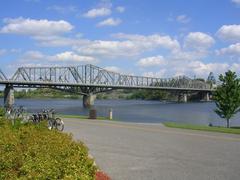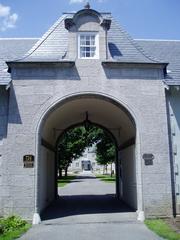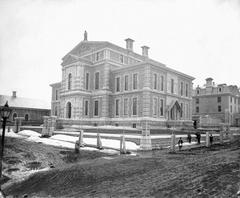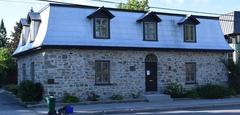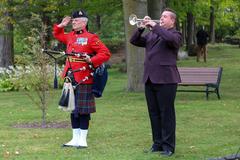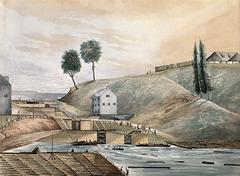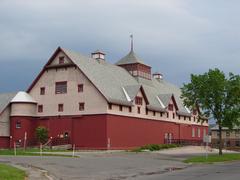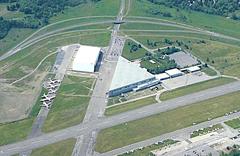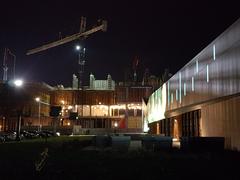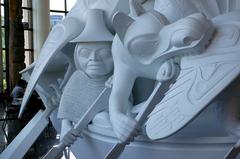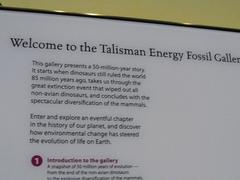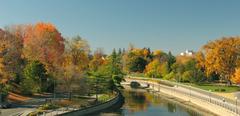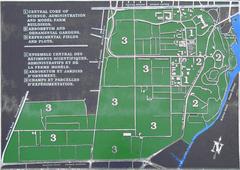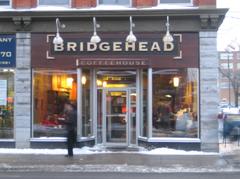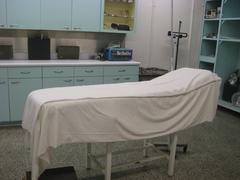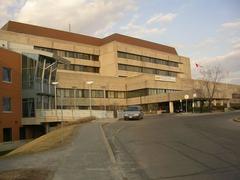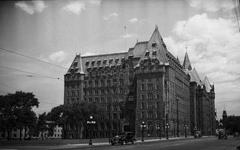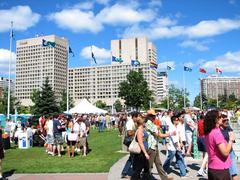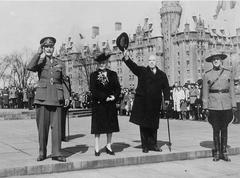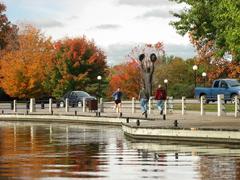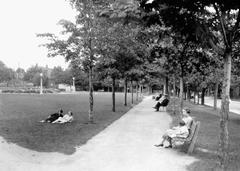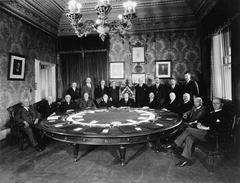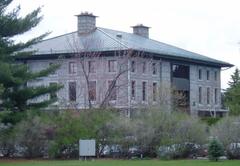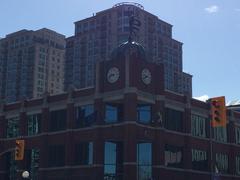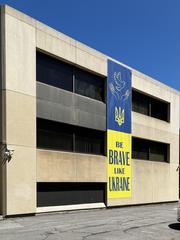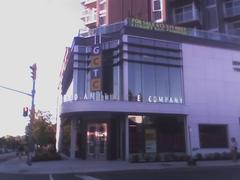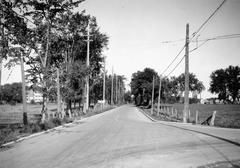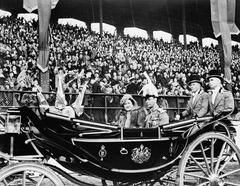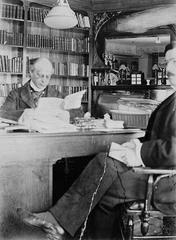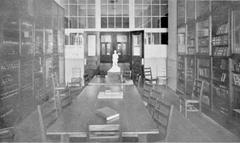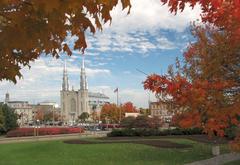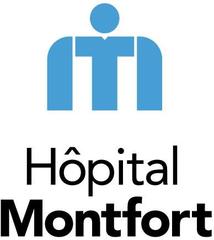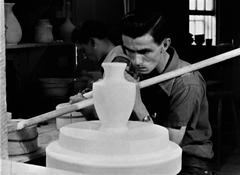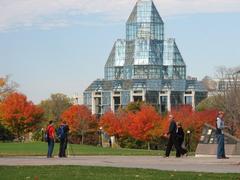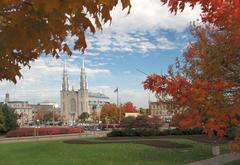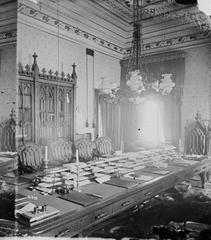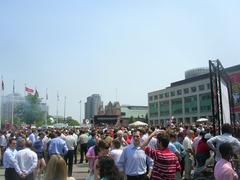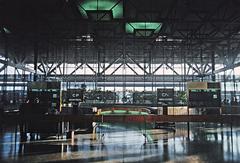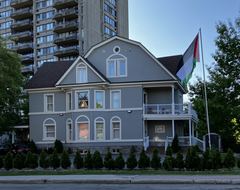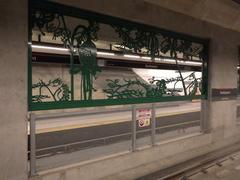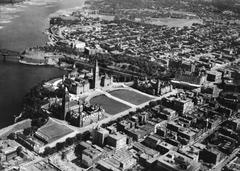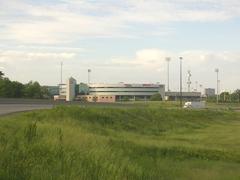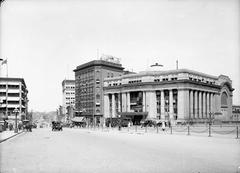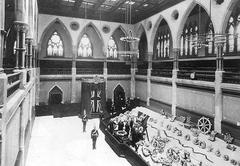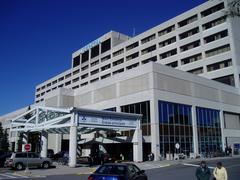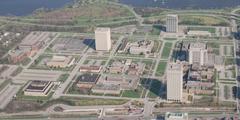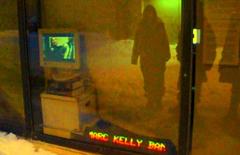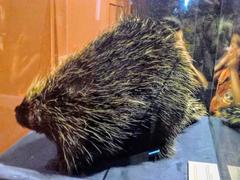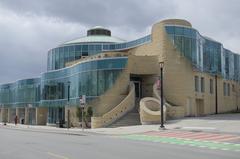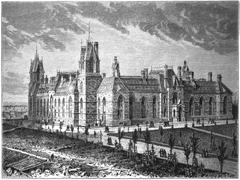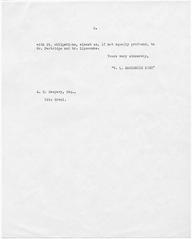
Cape North Lighthouse: Visiting Hours, Tickets, and Travel Guide – Ottawa Historical Sites
Date: 04/07/2025
Introduction: History and Cultural Significance
The Cape North Lighthouse is a striking symbol of Canadian maritime heritage, located at the Canada Science and Technology Museum in Ottawa. Originally constructed in 1856 by Trinity House at Cape Race, Newfoundland, this innovative cast-iron lighthouse has traveled across the country—relocated to Nova Scotia and later to Ottawa. Its modular design, remarkable for its era, allowed for such unprecedented movement. The lighthouse is renowned for housing a hyperradiant Fresnel lens crafted by Chance Brothers in England, projecting light up to 24 nautical miles—essential for safe passage through the perilous Atlantic waters (Mistaken Point; Wikipedia).
The lighthouse is more than a navigational aid; it is a living testament to Canada’s nautical past and technological advancement. It played a pivotal role in key historical moments, such as receiving distress signals from the Titanic via the Marconi wireless station, and its preservation in Ottawa reflects national dedication to safeguarding significant artifacts. Today, the Cape North Lighthouse offers visitors an immersive experience through its inspiring history, unique architecture, and interactive museum exhibits (Lighthouse Friends; Kiddle; Canada Science and Technology Museum; Canadian Museum of Science and Technology).
Quick Navigation
- Cape North Lighthouse Overview
- Historical Background
- Architectural Features
- Technological Innovations
- Visitor Information: Hours, Tickets, Accessibility
- Guided Tours & Special Events
- Nearby Attractions
- Visitor Experience & Photography Tips
- FAQs
- Planning Your Visit
- References
Cape North Lighthouse: Ottawa’s Maritime Treasure
Positioned at the entrance of the Canada Science and Technology Museum, the Cape North Lighthouse stands as a testament to Canada’s coastal engineering and maritime legacy. Its journey from Newfoundland through Nova Scotia to Ottawa invites visitors to explore stories of innovation, resilience, and cultural significance.
Historical Background
Construction and Early Years
Built in 1856 at Cape Race, Newfoundland, the lighthouse was designed to withstand severe Atlantic conditions. Its cast-iron modular structure was pioneering, allowing for assembly in remote locations and future relocation. Powered initially by a coal oil lamp and clockwork mechanisms, it guided ships for decades (Mistaken Point).
Relocation and Continued Service
In 1907, a new concrete lighthouse replaced the original at Cape Race, and the cast-iron tower was sent to Money Point near Cape North, Nova Scotia. There, it continued operation until the late 20th century, before being transported to Ottawa in the 1980s (Lighthouse Friends).
Technological Significance
A highlight of the lighthouse is its hyperradiant Fresnel lens—one of only twelve ever made. Manufactured by the Chance Brothers in 1906, the lens projects a beam visible up to 24 nautical miles. The site also hosted one of the earliest Marconi wireless stations, famously receiving Titanic’s distress signals in 1912 (Mistaken Point).
Architectural Features
- Material: Modular cast-iron plates, manufactured in Britain and assembled on-site.
- Height: 29 meters (95 feet).
- Daymark: Red-and-white checkerboard pattern for high visibility.
- Design: Slightly tapered cylindrical tower with lantern room and gallery.
- Interior: Iron spiral staircase, maintenance gallery, and robust doors/windows.
- Engineering: Prefabrication allowed for easy relocation and maintenance; resistant to harsh maritime weather (Wikipedia; Kiddle).
Technological Innovations
- Fresnel Lens: First-order hyperradiant, capable of projecting light up to 50 km. Initially operated with whale oil, later kerosene, and eventually electric power.
- Automation: Upgrades included electric lighting and remote monitoring, reflecting broader trends in Canadian lighthouse modernization.
Visitor Information
Location & Directions
- Address: 1867 St Laurent Blvd, Ottawa, ON, on the grounds of the Canada Science and Technology Museum.
- Transit: Accessible by OC Transpo bus routes 88, 97, and 25. Parking and bike racks available on-site (Trek Zone).
Visiting Hours
- Museum Hours: Tuesday–Sunday, 9:30 AM – 5:00 PM. Closed Mondays and statutory holidays.
- Lighthouse Grounds: Open year-round from dawn to dusk for exterior viewing.
- Special Closures: Check museum website for updates.
Admission & Tickets
- Museum Entry (includes lighthouse exhibits/guided tours):
- Adults: $15
- Seniors/Students/Youth: $12
- Children under 13: Free
- Tickets available online or at the museum entrance.
Accessibility
- Museum and grounds: Wheelchair accessible with paved paths and ramps.
- Lighthouse interior: Spiral staircase is not accessible; exterior and main floor accessible to all.
- Assistance: Contact museum for specific needs.
Guided Tours & Special Events
- Guided Tours: Offered seasonally (June–September), usually on weekends and select weekdays. Advance booking recommended (Canada Science and Technology Museum).
- Special Events: Includes National Lighthouse Day (August 7th), maritime heritage days, and educational workshops (WinCalendar).
Nearby Attractions & Amenities
- Within Museum: Interactive science exhibits, gift shop, café.
- Nearby: Rideau Canal, ByWard Market, Canadian Museum of History, Parliament Hill (Tourist Places Guide).
Visitor Experience & Photography Tips
- Exhibits: See the original Fresnel lens, logbooks, communication equipment, and keeper artifacts.
- Displays: Interpretive panels and interactive media.
- Photography: Best in early morning or late afternoon; the checkerboard tower makes for dramatic photos.
- Virtual Tour: Museum virtual tour available online.
Frequently Asked Questions (FAQs)
Q: What are the visiting hours?
A: Museum and lighthouse exhibits are open Tuesday–Sunday, 9:30 AM–5:00 PM.
Q: Do I need a ticket to view the lighthouse?
A: Exterior viewing is free; museum admission is required for guided tours and exhibits.
Q: Is the site accessible?
A: Yes, exterior is wheelchair accessible; interior tours may have limitations.
Q: Are guided tours available?
A: Yes, seasonally—advance booking recommended.
Q: Can I take photos?
A: Absolutely, but flash photography inside the museum may be restricted.
Q: How do I get there by transit?
A: Use OC Transpo routes; check the latest schedules online.
Planning Your Visit
For the most up-to-date information, including special events and tour availability, visit the Canada Science and Technology Museum’s official website. Download the Audiala app for audio guides, visitor tips, and details on Ottawa’s historical sites.
Essential Facts at a Glance
- Height: 29 meters (95 feet)
- Design: Modular cast-iron
- Original Site: Cape Race, Newfoundland (1856–1907)
- Later Site: Cape North, Nova Scotia (1908–1980)
- Current Site: Ottawa (since 1981)
- Distinctive Markings: Red-and-white checkerboard pattern
- Lens: Hyperradiant Fresnel, Chance Brothers
- Museum Website: Canada Science and Technology Museum
Summary and Travel Tips
The Cape North Lighthouse in Ottawa is a compelling destination for anyone interested in Canadian history, technology, or maritime culture. Its dramatic journey across provinces, rare architectural features, and pivotal role in nautical safety make it both a landmark and a learning experience. Plan to visit during the summer for full access to guided tours, and don’t forget your camera to capture the lighthouse’s vivid checkerboard exterior. Engage with interactive exhibits and consider exploring nearby Ottawa attractions to round out your historical journey.
Stay informed through the museum’s official channels and the Audiala app for a seamless and enriching visit.


